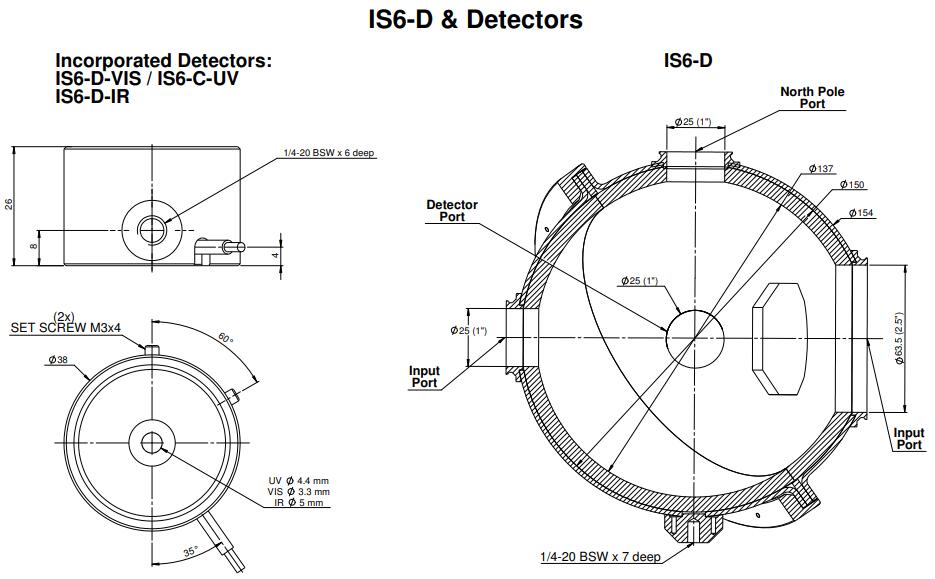Updated:2025-03-13
Views:1268
 WeChat
WeChat
 QQ
QQ
 Online Service
Online Service
 User's Manual
User's Manual
The IS6-D-UV is a 6” integrating spheres (5.3” inside) with a Silicon detector for use with divergent (D) beams. The IS6-D-UV comes with a UV detector, is calibrated from 200 to 1100nm and can measure up to 1W.

| Aperture | Ø26mm |
| Spectral Range | 200-1100nm |
| Power Range | 300nW-1W |
| Dimensions | Ø154 (mm) |
| Max Pulse Energy | 0.15mJ |
| Max Average Power Density | 1 kw/cm² |
| Max Average Power | 1W |
| Max Beam Divergence | ±60 deg |
| Sensitivity to Beam Divergence | ±3% |
Influence of Absorber Surface Damage on Measurement Accuracy
If the damage causes a change in absorption, the damage to the absorber surface will affect the reading. One way to check this is to move the beam slightly away from the damaged area and see if the reading changes and how much. When the damage threshold is specified, at this power or energy density value, appearance damage may occur, causing some color changes on the surface. However, the damage threshold is usually defined as the power or energy density that causes changes of more than 1%.
Influence of electromagnetic interference on measurement accuracy
Ophir instruments and sensors are certified to meet CE requirements for electromagnetic radiation sensitivity and emission. At almost all radiation frequencies where the intensity reaches the limit specified by CE, people will not notice any interference. In very few cases of specific frequencies, there may be some obvious interference. It has been specified that the maximum interference that can be seen at any frequency is less than 0.3% of the full rated power.
Customer Service QQ
Customer Hotline:
Technical Supports